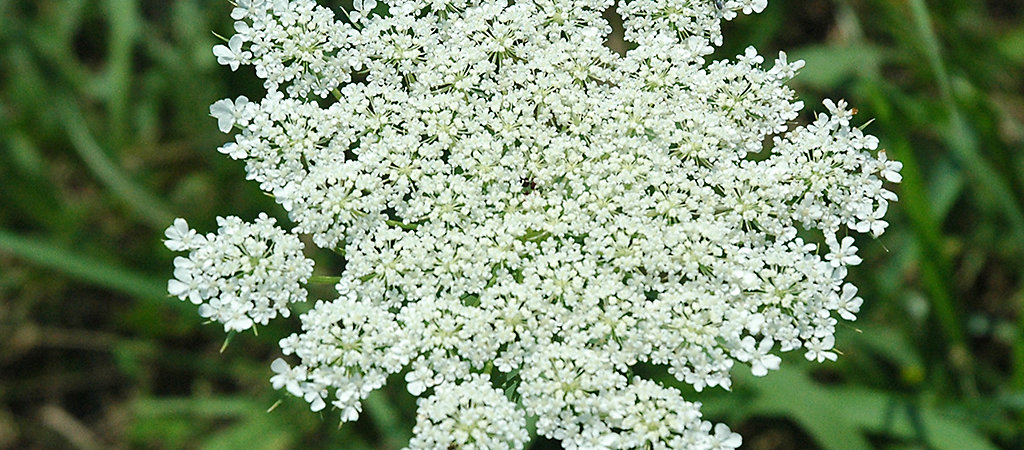What to look for
Queen Anne’s lace is a herbaceous biennial in the carrot family that can grow between 2 and 4 feet in height. Its stem is roughly hairy, upright and stiff, while its leaves are basal and alternate with one to several finely divided, fernlike leaflets. Additionally, its leaves increase in size toward the base of the stem and have a carrotlike odor, hence its common name of wild carrot.
This invasive plant is best known for its flowers, which are tiny, white, blooms in lacy, flat-topped clusters with a dark purple center. Its small, brown fruits have hooked spines that can attach to both clothing and animal fur, which aids in its dispersal. Each plant can produce 1,000 to 40,000 seeds.
Where it’s found
Native to Europe and southwestern Asia, Queen Anne’s lace arrived in North America with European settlers. It grows predominantly in disturbed dry grasslands, fields, meadows, pastures, ditches and railroad and roadside rights-of-way. Queen Anne’s lace also often invades open waste ground, competing for resources with native grasses and forbs. Additionally, this plant can be a threat to recovering grasslands and prairies due to its fast maturity and ability to grow larger than many native species.
How to treat it
Hand-pulling or mowing can be effective to control Queen Anne’s lace in the mid- to late summer before seed set. However, herbicide applications have proven the most effective method of control.
Foliar treatments of TerraVue™ herbicide, at only 2.85 ounces per acre, has delivered 99% control in trials on wild carrot. For best results, weeds should be treated when they are actively growing and under conditions favorable for growth.
Check treated sites annually for new plants and re-treat if necessary. TerraVue is a selective herbicide, meaning it will control Queen Anne’s lace and many other troublesome broadleaf weeds while allowing most native grasses to flourish. This selectivity offers an added measure of control against future infestations.
Connect with Vegetation Management:

™ ® Trademarks of Dow AgroSciences, DuPont or Pioneer, and their affiliated companies or their respective owners. When treating areas in and around roadside or utility rights-of-way that are or will be grazed, hayed or planted to forage, important label precautions apply regarding harvesting hay from treated sites, using manure from animals grazing on treated areas or rotating the treated area to sensitive crops. See the product label for details. TerraVue is not registered for sale or use in all states. Contact your state pesticide regulatory agency to determine if a product is registered for sale or use in your state. Always read and follow label directions.

